Alaska & Aleutian Islands Voyage on MS Fridtjof Nansen (Sep 2024)
- polardreamtravel
- Aug 23, 2024
- 15 min read
Updated: Oct 14, 2024
An expedition trip to Alaska is something in my mind for a while. I also read a lot about Aleutian Islands. So when the opportunity came for an expedition trip combining the two, I signed up immediately.
The exciting voyage is with MS Fridtjof Nansen on Sep 1-18 2024. Please check this page often as well as our facebook page for updates. I cannot wait to share what I will see and experience :-)
Cheers,
Frank

Sep 1 2024 ( Vancouver)
Vancouver is a beautiful city to start the trip. There are so many things to explore and so many foods to choose from. Stanley Park, Vancouver Aquarium and downtown waterfront area are my top votes for hanging out. Vancouver also has many trails for hiking. I spent a half day for a Dog mountain hike @ Mount Seymour - fabulous view!
Sep 2 2024 ( Vancouver - Nome)
An early morning bus ride brought us from Hyatt Regency Vancouver to the airport. A charter flight arrived at Nome around local 1 pm.
Nome was a town built during the gold rush in the early 1900s. It has a population of 3,700 today. A drizzling 50 degree afternoon reminded me how the summer here is totally different from anywhere else.
As the residents of the town say, “there's no place like Nome.” The city is perhaps best known today as the finish line for the 1,049-mile Iditarod Trail Sled Dog Race. A dog mushing demonstration was followed by walking tour to visit Old St. Joes Church, museum and Bering Land Bridge National Park. Around 4 pm, I finally boarded MS Nansen!
Sep 3 2024 (At Sea)
I got a chance to tour the ship yesterday between briefings and meals. I was quite impressed by MS Nansen’s modern interior design. I also like a full range of options for a healthy lifestyle onboard, ie. two outdoor jacuzzis , an outdoor hot swimming pool, sauna, indoor gym and a running track on the top deck. Explorer lounge is big enough to accommodate max 500 guests. However only half can see the faces of the presenters.
There are a total of three restaurants onboard. Main restaurant Aune needs to reserved ahead of time free of charge for all passengers. You can eat at any time at Fredheim (no reservation is necessary). Specialty restaurant Lindstrom can be booked for extra charge (free for suite passengers)
I thought Drake Passage is the only rough sea I need to worry about. Now I understand Bering Sea needs to be added to the list:-) Our ship is full speed towards St. Matthew Island. I noticed some fellow passengers felt the same as I. Thanks for our hotel staff, I was able to have a special prepared fried rice and fruit cuts at my cabin. Cannot wait to land tomorrow!
Sep 4 2024 (St. Matthew Island)
St. Matthew Island, where we planned to land today, is at least 300 kilometers away from any human settlement. There are strong winds and surfs all year round, and the winter is particularly harsh. Historically, Russians, Americans and local indigenous people have come here, but none has managed to stay. In the late 18th century, there were as many as 300 polar bears on this 350 square kilometer island. In 1944 during World War II, the US Coast Guard set up Loran Station here. As a food reserve, 29 reindeer were brought here. Due to the lack of predators, the number of reindeer peaked at 6,000 in 1963. But almost none survived the following winter. That is why St. Matthew Island is called a place that humans cannot conquer.
Some unique wildlife you may see here are singing voles, McKay’s Bunting, and Arctic foxes that never shed and stay brown all year long. Every year fewer people visit St. Matthew Island than Antarctica.
There was no wind when we arrived at St. Matthew Island in the morning. However the fog was dense and visibility was very low. Our ship waited until 1 pm, and the situation did not improve. The expedition leader had to announce that we would have to give up landing and continue sailing south. Well, I guess this is probably why this is an expedition trip, and it is the price everyone must be prepared to pay!
Sep 5 2024 (St. Paul Island)
When I woke up in the morning, St. Paul Island was already right in front of us. A beautiful island covered with green, is dotted with houses, buildings and various communication antennas.
St. Paul Island is a volcanic island. In history, it has been a base for seal hunting since 18th century. There are less than 500 residents on the island today. St. Paul island is party of Alaska Maritime National Wildlife Refuge. It is a birding heaven with more than 500,000 northern fur seals and millions of seabirds. About 56% of birds found in Alaska can be found here. Many of them are birds coded 4-6, i.e. they have been seen no more than 6 in total or no more than 3 in the past 30 years. To name a few of them: Eskimo curlew (Code 6), Song Thrush (Code 5), Eurasian Hoopoe (Code 5), Chinese Pond Heron (Code 5) & Gray Heron (Code 5). You may be able to see horned puffins, tufted puffins and red-legged kittiwakes here.
The plan A was to get everyone on the shore by inflatable tender boats. They can shuttle 120 passengers each time. However due to the swell, the plan was scratched. The ship was then repositioned to the opposite side of the island for possible landing sites. Again, it had to be given up due to slippery shore. Finally the plan C was decided to be appropriate to get everyone for a zodiac cruising for bird cliffs and fur seals.
I went up to the top deck while waiting for my group's turn. A few seals were easily spotted lying on a couple of rocks just off the shoreline. Not long after, a group of seals were seen swimming playfully along the shore, and taking turns to sticking their heads out of the water. Couple zodiacs were full speed towards the bird cliffs.
The wind seemed picking up a lot after first batches of zodiacs went out. The voice of our expedition leader then came from the PA system about the sad news that the subsequent zodiac cruising had to be cancelled due to the difficulties for zodiacs to return safety to the ship. Later in the briefing, we were shown a short video clip at the gangway which explained well why the decision was appropriate.
Although disappointed, I felt positive that at least we can see clearly the land today. Maybe tomorrow will be our lucky day :-)
Sep 6 2024 (Sea Day - Arriving Dutch Harbor)
It was supposed to be a sea day on the way to Dutch Harbor. It was cloudy & foggy outside the window as usual in the morning. But not much wind. It seems that our captain knew pretty well how we all felt from the past two days. A good news was broadcasted shortly after lunch that our ship would arrive Dutch Harbor ahead of schedule at 6 pm.
Around 4:30 pm, a group of whales surrounded our ship on both sides. The sky was still gloomy. As the ship sailed into Unalaska Bay, the sun finally broke through clouds. We saw blue sky the first time since we left Vancouver for the voyage! To add excitement to the arrival, another set of whale performance took place. Some of them were pretty close. Surrounding mountains were all covered in green. You could clearly see craters at the top. The highest Makushin Volcano was the only one covered with snow and ice at high altitude.
We got off the ship and decided to head to Aleutians World War II National Historical Area. It was not far from the pier, but it turned out to be quite an extensive hike for 2.5 hours round trip. US Army Fort Schwatka is the highest military post in the United States at 897 feet above the sea level. It was home to 1,000 US servicemen. The Fort's concrete observation posts and command center were designed to withstand earthquakes and 100 miles per hour winds.
A 360 degree view of the harbour and the city below was absolutely breathtaking. Sun started to set, and the water in the bay shimmered. Near the shore far way, dozens of blows went up in the air, particularly stunning in the sun. Clouds of different shapes hovered in the sky. What a day!
Sep 7 2024 (Dutch Harbor)
It was another day to demonstrate how weather in Alaska could change quickly. It was quite cloudy with a bit of raining when I headed to Aleutian World War II museum in the morning.
On Jun 3 1942, Japanese aircraft struck Dutch Harbor. Couple days later, the Japanese invaded Attu and Kiska. In the next 14 months, US troops took these two islands back after a year long bombing campaign and naval blockade. The exhibitions and movies at the museum brought the visitors back to eighty years ago to see how the war played out and its impacts to the local Aleuts.
By the time I was on the shuttle to Bunker Hill for a hike, the sky has turned brighter. The hike route passes numerous WWII ruins. At the top, a large concrete bunker, the remains of a battery command station from WWII could be found, along with remains of four circular Panama mounts for 155mm guns.
The view was gorgeous for a 360 degree peek of the town and surrounding bays. Fishing processing plant is just across from Captains Bay. During peak season, over 1,000 temporary workers come here. Dutch Harbor is the largest fish exporter by volume. White fish is the now main harvest while red king crabs used to be the top.
On the way back to the ship, we did a quick stopover at the Russian Orthodox Church. The stream in front of the Church was full of dog salmons. A sea otter was lying on its back and enjoying sunbathing.
Sep 8 2024 (Unga Village)
The recent history of Unga Village can be traced back to 18th century. It was established as a fur trade post in 1833. Unga became a booming town in late 19th century due to the discovery of gold. The earthquake on Mar 27 1964 blocked the water entry to the village, which became the last straw to make this a ghost town when the last family moved out in 1969.
When I walked on the muddy trails of the village, it was clearly visible that there are still other residents here, ie . feral cows. In the water, sea otters and seals popped up their heads and looked at us curiously. Even further, a blow was seen and it seemed that a whale has been hanging out in the bay since lunchtime.
In the way back to the ship, our zodiac took a detour to the nearby bird cliffs. I spotted horned puffins , tufted puffins and even common loons.
Sep 9 2024 (Aniakchak Bay)
Our ship continued heading northeast along the coast of Alaska Peninsula overnight. I woke up at 7:30 am in the morning and the sun was about to rise. A beautiful day was waiting for us!
We have arrived at Aniakchak Bay, which is part of the Aniakchak National Monument and Preserve. It is the most rare visited National Park in US. The main landmark hete is Aniakchak Volcano. Within the 6 mile crater, streams and rivers flow into Surprise Lake which is the source of Aniakchak River.
Our zodiac cruising was scheduled in the morning. It was blue sky with low hanging clouds. Aniakchak Volcano was clearly visible on the horizon. We spotted three sea lions in the water. The highlight of the cruising was a large group of harp seals hauling out on the rocks near the shore. Every single rock was occupied and a few of them performed the classic 'belly-up' position for us.
Kelly, our zodiac cruising driver, picked up a large piece of Kelp. She cut the stem and turned the zodiac session into a music talent show at the end :-)
The sun shone brilliantly. It was warm without any wind. I decided it was a good time to try out the swimming pool, jacuzzi and sauna on the Deck 10 after lunch. It turned out that great minds think alike. I met quite a few fellow passengers on the top deck doing the same :-)
Before the daily meeting at 8:30 pm, we were on the deck to enjoy the beautiful sunset. Mount Chiginagak (7,287 ft) was still in the view. I noticed there was a small patch of red to the right of the sun. Tim, our science coordinator, explained to me that this is called a sun dog. A sun dog is caused by the refraction of sunlight by ice crystals in the atmosphere. What a great way to end the day and learn something new!
Sep 10 2024 (Geographic Harbor)
We arrived at Geographic Harbor in the morning. It is part of Katmai National Park and Preserve. The forecast called for light rain but we were lucky it didn't happen until we left in the late afternoon.
Katmai is known for its rugged, volcanic terrain, and the high elevations and cold temperatures in the region contribute to the accumulation of snow and ice. Snow and ice lead to white patches on the mountains, a striking feature against the otherwise dark and volcanic rocks. There were also numerous waterfalls can be seen from far away.
Everyone on the zodiac was looking around for a moving brown object, per instructions given by Misty, our zodiac driver. Katmai is estimated to have around 2,200 to 2,500 brown bears especially during the salmon spawning seasons. All we needed is to see one :-)
Our zodiac was heading towards the end of the Geographic Harbor. Suddenly we spotted two moving dots on the shore. That must be it! Our zodiac reduced the speed and approached slowly. It was a mother brown bear with a cub slowly walking along the shore. They both looked pretty healthy. The mom stopped once in a while to check on the cub behind her.
We saw the pair disappeared in the bushes, and chatted happily. Misty now moved our zodiac to the other side of the bay... And we cannot believe it - we saw three brown bears spread out within 200 feet. The closest one was wandering in the shallow water. Suddenly it jumped around couple times. It finally buried its head in the water and came out with a salmon in the mouth.
All of us were completely immersed. Not sure how long it passed until a voice from Misty's radio came out. "What time is it?" Misty answered ,"I had no idea". We all chuckled. On the way back to the ship, we spotted another bear along the shore. Unfortunately we ran out of time.
Sep 11 2024 (Uyak Bay - Kodiak Island)
It was the shortest transit overnight for our voyage so far. MS Nansen just moved from the main land to Kodiak Island across the Shelikof Strait.
Kodiak Island is the second largest island in US with 3,595 sq mi (after Big Island of 4030 sq mi). We have not seen much trees during our voyage until now. Southwest two thirds of Kodiak Island is part of Kodiak National Wildlife Refuge. Around 3500 Kodiak Bears live here, which are largest bears in the world.
Our zodiac cruising was scheduled for the afternoon. Kelly was our zodiac driver again today. Not far from the ship, we ran into a huge group of jelly fishes just below the water surface. After our zodiac circled twice, these cute creatures were getting shy and started to swim further below.
The next show was two sea otters happily showing their bellies when we passed by. They looked at us briefly but then minded their own business. Kelly then informed us that three sea otters were seen ahead. Shortly after, a large group of sea otters, more than 20, were spotted. However when our zodiac started to get closer, they all ran away from us.
While we were all disappointed, suddenly they showed up again on both sides. Their heads were above the water and started to swim along us. All of us took the opportunity to make another round of photo shooting.
The end of the bay was just ahead of us. Water was getting shallow. And, I saw numerous birds were standing or flying near the beach. Not surprisingly, I spotted a brown bear nearby!
Sep 12 2024 (Seaward)
The sea was pretty rough last night. When MS Nansen docked at Seaward in the early morning, and it was drizzling outside.
Many years ago I visited Seaward after getting off a cruise ship at Whittier. I hired a private driver to meet us at the pier of Whittier, and drove us to Seward. After an overnight stay, I took the train to Anchorage when I saw numerous belugas in the bay which was the highlight of that trip. It was raining in Seward last time.
My favorite is Alaska Sealife Center. The ship of F/V Alaskan Bounty welcomed me at the entrance of the 2nd floor. It was so healing to see so many colorful fishes. There were sea stars, sea urchins, sea cucumbers & anemones in the touch pools. Two steller sea lions were happily chasing each other and harp seals were showing off their swimming skills. It was so amazing to encounter tufted puffins, horned puffins and other birds in close distance.
Sep 13 2024 (Icy Bay)
Icy Bay is part of the larger Wrangell-St. Elias National Park. It was totally covered by ice at the beginning of the 20th century. The glaciers have retreated 50 km since then. Tsaa Fjord and Tann Fjord are the two major arms of the water channels in this area.
It was drizzling when we got on the zodiac. Expedition guide Chris provided us a briefing before heading towards Guyot Glacier right in front of us. Mountains around the fjord consist of all dark rocks. Numerous waterfalls could be seen. Some came from the very top which are still covered by glaciers. The biggest waterfall among them, as wide as 500 ft, was pouring down at the right of the glacier.
While we were amazed by the power of the nature, a loud thunder was heard. A big chunk of ice at the bottom of the glacier collapsed into the water. There were many floating ices in the water. Chris picked one up and we all took turns to take photos. On the way back, Chris drove us into the mist of the waterfalls to conclude such a memorable visit.
The rain seemed to have stopped. The sky became brighter. The fog was slowly lifting. The glaciers in the distance were shimmering with a blue hue. The green bushes and trees on both sides of the fjords were more clearly visible. What an absolutely breathtaking view!
After dinner, the sky was entirely clear. We enjoyed another amazing sunset! Tomorrow is going to be another great day!
Sep 14 2024 (Sitka)
The MS Nansen approached Sitka in the late morning, passing by dotted islands covered in Sitka spruce. The sky was a crystal blue, and rugged mountains were shrouded in clouds. The water was calm, and birds were flying overhead. Volcanic Mount Edgecumbe was clearly visible.
Sitka is a traditional homeland of the Tlingit people. It was the site of the Russian colonial capital of Russian America from 1804 until 1867. Sitka became part of the United States when the U.S. purchased Alaska from Russia in 1867. It served as the capital of the Alaska Territory until 1906.
Although it is a small town, Sitka offers many places to explore, rich with Native and Russian history. I began my visit at Baranof Castle Hill, where I enjoyed a panoramic view of the bay. I then took some lovely photos of Totem Square and the Pioneer Home. After a detour to see the Russian Blockhouse, I returned to Lincoln Street to admire St. Michael's Cathedral.
The highlight of the day was Sitka National Historical Park. Along the Sea Walk Trail, we encountered numerous totem poles. As the sun began to set, fish occasionally leaped from the water in Sitka Sound. Seagulls and other seabirds were scattered along the beach and hovered overhead. The trail eventually led to the bank of Indian River, where the shallow waters were teeming with salmon struggling to swim upstream to spawn. For those that failed, their bodies were visible almost everywhere. This behavior reflects the remarkable sacrifice each individual makes to ensure the survival of their offspring, highlighting a profound aspect of their life cycle.
Sep 15 2024 (Wrangell)
Wrangell is the third oldest community in Alaska, and the second oldest community in Southeast, and the only city in Alaska to be ruled by four nations and under three flags: Tlingit, Russia, Britain, and the United States. Wrangell used to be the jumping-off point for three gold rushes up the Stikine River from 1861 to late 1890s.
It was raining as usual when the ship arrived in the morning. Before our scheduled town tour, I decided to have a quick hike via Mt. Dewey Trail. The trailhead is just couple blocks aways from the city dock. The trail was well maintained with wood boardwalk all the way. Huge straight spruce trees pointed to the sky. Mist shrouded at the top. Within 30 minutes, I was already at the view point for a nice overlook of the town and the bay.
The town tour included Chief Shakes Tribal House and Petroglyph Beach. Chief Shakes Tribal House is a replica of the traditional Tlingit clan house. Petroglyph Beach has the highest concentration of ancient rock carvings in the southeast Alaska. Our guide Corey also gave us a very good overview on how Tlingit Matriarchal society works. Corey was about to head to college start Marine Biology in just a couple hours. Good luck for him and thanks for his dedication to help us understand more about Wrangell!
Sep 16 2024 (Misty Fjords)
We got up quite early today for a zodiac cruising at Misty Fjords National Monument. Coincidentally, it was raining again. MS Nansen sailed well deep into so that our zodiac can tour the end of the fjord within the allocated 45 minute time slot.
It seems that we were all in a beautiful piece of ink painting. Rock walls rise dramatically from the fjords. Thick rainforest grows on nearly vertical slopes from sea level to mountaintops. Numerous waterfalls plunge from above. Our zodiac approached one of the waterfalls, and we all enjoyed the extra love from the mother nature.
It started to pour. However we noticed that we were not the only ones still active in the weather like this. A bald young eagle was standing still on a rock near shore not far from us. A seal popped up from the water, stared at us for a moment and then dove.
After the ship sailed out of the fjord, the famous New Eddystone Rock was passing by from the port side of the ship. This is a pillar of basalt over two hundred feet tall and is covered by two hundred different species. Even with the dense fog around, it still stood out.
Sep 17 2024 (At Sea)
The last day was a sea day heading back to Vancouver. After an action packed expedition voyage, it was such a gift when I could finally relax and enjoy for doing nothing :-)
Well, not exactly. The view was breathtaking as I stepped onto the deck in the afternoon, and our ship sailed through the Inside Passage. It felt as though we were all part of a living painting. A large school of porpoises was swimming around the ship, left and right. A lot of us were running around on the decks like kids searching for their favorite candies!
Overall this was a very exciting journey! I would do it again maybe in July or August to land on St. Matthew and St. Paul Island if possible. Weather is always an unknown for remote areas like this. But the expedition team did a great job to navigate and switch to Plan B and Plan C etc... Kudos to them, and hope can come across in the near future again!

















































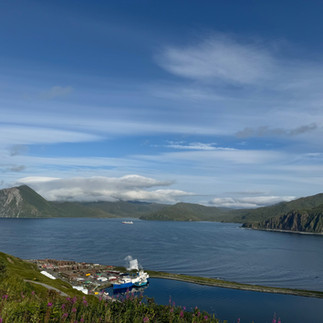



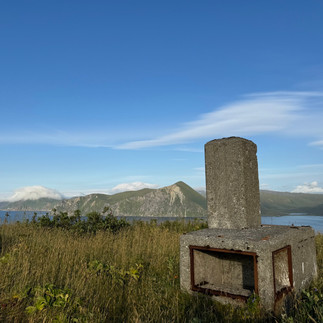






















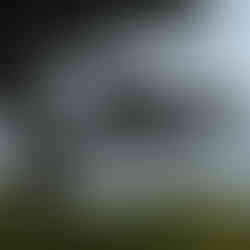




































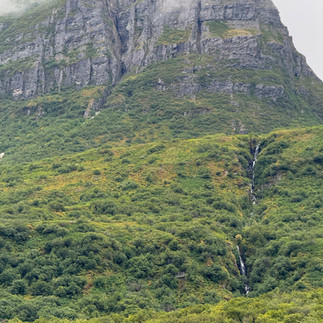





















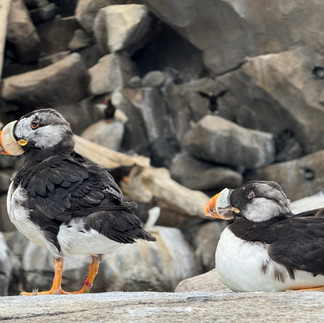





























































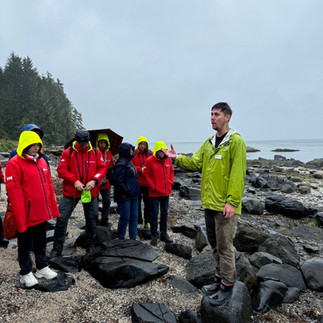



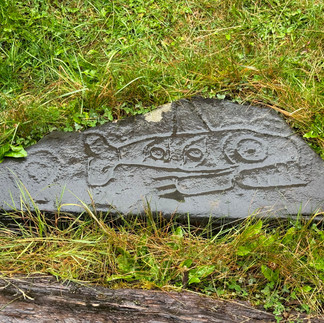



































Comments